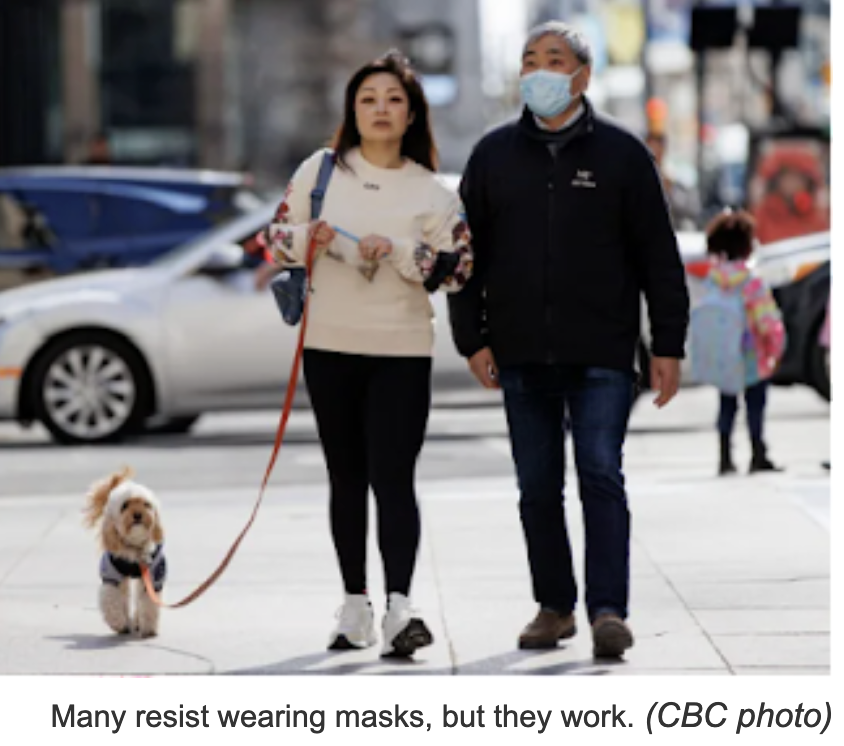The pandemic is over; now Covid-19 is endemic but is still a leading cause of death. When we will stop treating it differently?

As new coronavirus variants make the headlines and Covid-19 hospitalizations are are on the rise, experts told Carolyn Y. Johnson of The Washington Post that this is the new normal in a world where Covid is now considered an endemic disease.
This, Johnson writes, is prompting people to ask when we can stop treating the novel coronavirus differently from other common respiratory diseases.
Experts in Kentucky and elsewhere say the answer will vary, “depending on people’s individual tolerance for risk and the changing landscape of variants and boosters,” Johnson reports.
“Doctors have little to offer people who are stricken by the constellation of lingering symptoms known as long covid. Vigilance is still required to protect high-risk people, including those who are older or who have compromised immune systems.”
Covid-19 was the No. 4 cause of death in the U.S. in 2022, behind heart disease, cancer and unintentional injury. And many Americans and Kentuckians continue to suffer from “long Covid,” lingering effects of the disease.
“The newer people [just diagnosed] with long Covid are really angry,” Hannah Davis, a co-founder of the Patient-Led Research Collaborative, who has long Covid, told Johnson. “Everyone’s been told the pandemic is basically over, the risk is basically over if you are vaccinated.”
All that said, public-health experts told Johnson that there is a middle ground between living in fear of the virus and ignoring its existence. And, she writes, this is especially true since we have widespread immunity, and tools such as masks, testing, treatments, updated boosters and improved ventilation.
Also, she writes, “Many public-health experts also hope that our concept of normalcy will shift, and that habits people learned to guard against Covid — such as staying home when sick and putting on a mask in high-risk situations — will become muscle memory,” done with little thinking.
One challenge is that with the end of the public-health emergency in May, federal policies that had made Covid markedly different from other diseases — such as the government footing the bill to buy vaccines, tests and treatments for everyone — ended, Johnson notes. And with reporting requirements fading away, cases have become harder to track. Instead, experts look to other metrics, like wastewater sampling and hospitalizations, which have been rising since July.
 Johnson spoke with Scott Lockard, health director for the Kentucky River District Health Department, which serves seven counties, about the increase of Covid in Eastern Kentucky.
Johnson spoke with Scott Lockard, health director for the Kentucky River District Health Department, which serves seven counties, about the increase of Covid in Eastern Kentucky.
Lockard said he’s seen a jump in employers calling for guidance when a worker tests positive for Covid, and noted thatg Lee County schools shut down for a few days in August because they were seeing so many absences due to respiratory illness. And the disease is even hitting Lockard’s staff.
“Pretty much, my message is: If you’re in a mass gathering, you’re likely to come in contact with someone who has Covid right now in our area,” he said. “So protect yourself accordingly.”
Johnson writes, “Even as health experts urge people to stay calm but alert, many argue that we need to continue to treat Covid differently from seasonal flu or the common cold for a few reasons.” But others told her that we still don’t know what to expect from the virus so it’s important to remain cautions. Added to that concern, one expert told Johnson that as we become more complacent about Covid-19, we may have lost “our barometer” for knowing when to worry.
At the time Johnson wrote the article, the White House had not announced that it was relaunching its free Covid-19 test program, allowing every household to order up to four free tests through the mail. Orders can be placed at COVIDTests.gov starting Sept. 25. The tests will be delivered without charge.